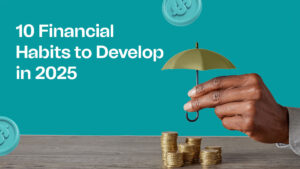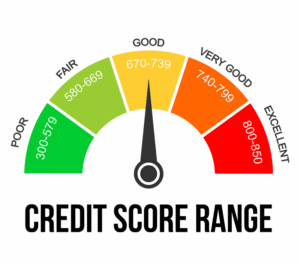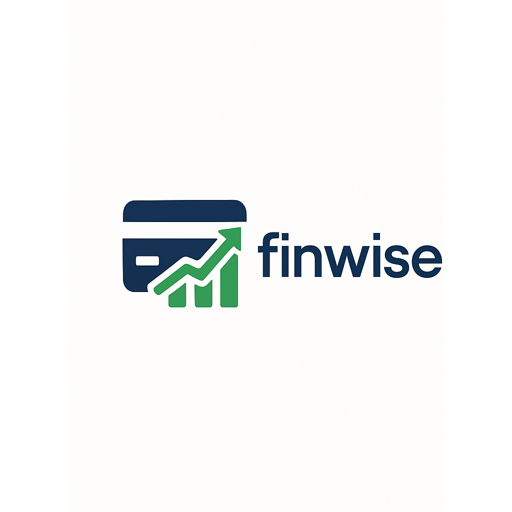7 Financial Habits to Work on for the Second Half of 2025
Halfway into the year provides an excellent opportunity to pause and reassess your financial goals. Perhaps the year started well for you with lots of good intentions but somewhere along the line life got in the way. Or maybe you have been consistent but want to finish the year with a much bigger bang. To get back on track and smartly recalibrate, consider a mid-year financial checkup that puts you back on the path to achieving everything you set out to do in 2025.

And that leads us to the topic of the day, seven money habits you can do better right now that’ll help you find more financial success between now and the end of the year.
Review Your Budget and Spending
The very first step of a financial checkup is knowing where your money is going towards. Then consider income, fixed expenses and variable expenses. How does your spending compare to your budget from earlier in the year?
Ask yourself the following questions:
Are you overspending in some categories?
What subscriptions or services do you no longer need?
Can you set aside additional money every month?
If you have increased your expenses, it may be time to make adjustments. Even small tweaks such as reducing eats out or swapping to less expensive service providers can release funds for savings and paying back debt.
Review: Financial Goals Progress
Consider the resolutions you made in the beginning of the year. Perhaps, you planned on paying down a credit card, creating a rainy day fund, or saving for a trip.
Write down:
The goals you set in January.
The distance you have traveled to make progress.
What remains for you to accomplish in the next half a year.
And if you are falling behind on your goals, do not worry. Not too late to fix it. You can find ways to increase your monthly savings, earn additional income or cut costs elsewhere.
Boost Your Emergency Fund
Emergency funds are among the most vital components of financial security. If you do not have 3 months of expenses saved, prioritize this for the 2nd half of the year.
Start small if necessary. If you save $10 a day that is $1,800 after six months. Set up another saving account and have an automatic transfer deposit each payday to make saving easier. Self-discipline — Pay your savings bill first.
Pay Down High-Interest Debt
High-interest debt like credit cards can suck the life out of your finances. Look at all your debts and pay them all off from the top down, highest interest rate first. Even putting a little more toward the mortgage every month helps in the long run.
Consider strategies like:
The debt snowball (paying off the lowest balance first).
The debt snowball (which prioritizes the smallest balance to gain traction first).
If you have other outstanding debts, you could also consider balance transfer credit cards or personal loans with more favourable interest rates.
Review Your Credit Report and Score
A credit score affects loans, credit cards, and even rental housing. Enter a free service like AnnualCreditReport. Your free credit report from all 3 bureaus can be found at annualcreditreport. Check for mistakes, unfamiliar accounts, or past-due payments.
If you are not satisfied with your score, then work on increasing it by:
Paying all bills on time.
Reducing credit card balances.
Refraining from applying for new credit, except in cases of necessity.
What we can do today to get our credit scores in shape to pay less interest in the future?
Review Your Insurance and Subscriptions
This time of year is also a good time to reevaluate insurance policies, and other monthly bills. Ensure coverage on your health, car, home, and life insurance.
Subscription services: You could be spending money on things you no longer utilize — streaming subscriptions, a gym membership, or apps perhaps? Get Rid of Unused Subscriptions — If you’re paying for stuff you’re not using, getting rid of it opens up some more cash for savings or applying towards your debt.
Modify Your Savings and Investment Plan
Now the second half of the year is an opportunity to rectifying your savings and investment. If you have withdrawn from a retirement plan such as a 401(k) or IRA, ensure to take a look at your contributions. So how are you doing with your annual goal so far? Would you mind upping your contribution a bit?
If you have additional savings goals (e.g. saving for a home or education), then develop a strategy to save a little money every month. Something like automating savings can make it easier to be consistent.
For the Rest of 2025, how to keep yourself organised
It’s much easier to make changes when you know exactly what you need to do. So here are a few tips that will help you to be consistent for the next six months:
Set specific and measurable goals.
Automate savings and debt payments.
Track your progress monthly.
Doing something significant to motivate yourself? Celebrate small wins!
It is never late to catch up even if you have already been behind during the earlier part of the year.
Final Thoughts
June is the ideal time to take a moment to check in on where you are financially and potentially make some wise tweaks to your money game. Culminating 2025 in a better financial position can be achieved by revisiting your budget, getting debt under control, creating an emergency fund, and recalibrating your saving strategy.
Whatever it is, take action today, right now, and that is go out is the main thing. Doing small parts on a recurring basis will slowly add up to be a large piece of work. Take this next six months to improve your habits and establish your financial foundation.
Our Post

High Interest Rates, Credit Cards and the U.S. Consumer: What to Know in 2025
The Note: How Decelerating U.S. Economic Growth Affects Using Consumer Credit


